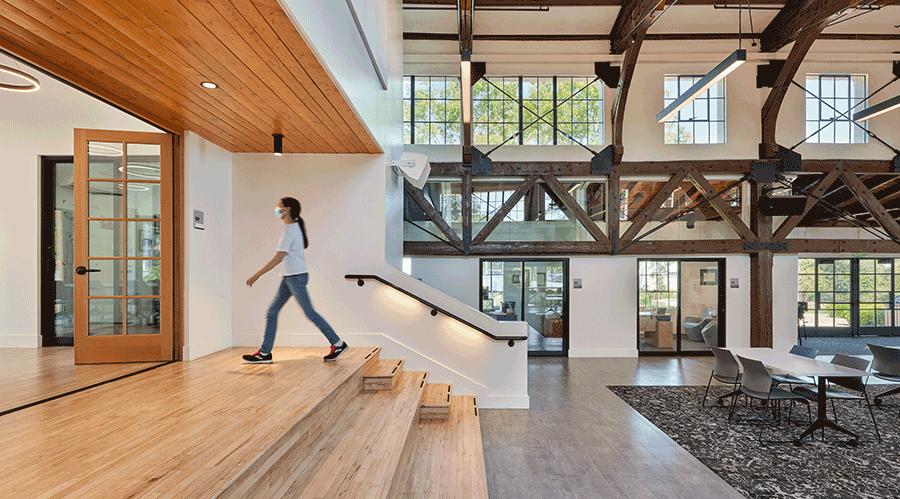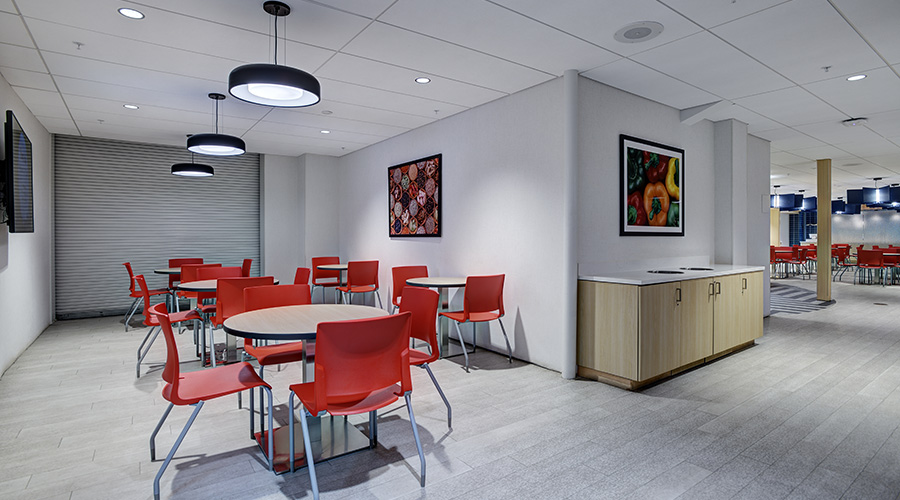Prepared for Enterprise Wireless Alliance
Wireless Technology Migrates to Building Controls
New wireless technologies allow easy relocation of system components while permitting controls to reach previously inaccessible areas
The building automation system in a typical high-rise office building can be complex. Expected to perform without interruption, the systems can have myriad control points and force legacy equipment to work alongside modern control hardware.
Likewise, wireless networks have a reputation for complexity. Building materials such as concrete and steel can inhibit wireless transmission, while early wireless networks had a reputation for compromising security.
So why combine the two? To begin, wireless technology has matured, with improved security and better transmission rates. Combined with building automation systems, wireless technology offers the potential for easy relocation, operational savings and reliable performance.
For existing buildings, wireless technology offers the opportunity to improve control and address old trouble spots. “Our customers tend to focus on what their problem is,” says John Ruiz, manager of wireless building systems for Johnson Controls. “If they are having a hard time running wire through a building and they can’t get to a controller, they are interested in wireless technology for the controller.”
In the case of one high school, data from a field house, separate from the main building, was able to feed into the existing control system by adding a wireless connection to the field house. Using a wired connection would have required tunneling under a parking lot and into the building, says Ruiz.
Wireless controls make sense in buildings where control networks are physically difficult to install, says Jay Hendrix, manager of wireless solutions for Siemens. “There are a lot of schools that would love to automate their systems but can’t get over the installation costs,” he says. “Now they can do it and be able to create a building that is more energy efficient with better indoor air quality.”
For new facilities, wireless technology offers facilities executives the flexibility to move wireless sensors when rooms are reconfigured. Eliminating a wired connection also offers the potential for reduced labor costs, says Jim Kohl, Trane’s senior product manager for wireless and sensor products. “Not only do you save on labor costs for the initial installation, it’s not uncommon for those sensors to be moved several times throughout the life of a building, especially if it’s a retail space. Anytime you move that sensor you are looking at time and labor savings.”
With a variety of wireless options on the market, facilities executives should focus attention on selecting wireless technology that functions most effectively. Facilities executives need to consider the application — whether they are seeking wireless controls for temperature sensors or for a larger scale application, such as VAV boxes and controllers. Adding wireless connections to VAV boxes may allow the addition of control points that previously weren’t part of the system, Ruiz says.
Many facilities executives opt to begin with wireless sensors. “Wireless will eventually hit every part of building automation,” says Kohl. “But the biggest opportunity is with sensors because they are used and moved more often than other HVAC devices.”
Once the application is decided, facilities executives also have to determine the kind of wireless technology that best fits their needs. Among the choices: point-to-point networks and mesh networks.
In a point-to-point network, each wireless point, such as a temperature sensor, is paired with a receiver. The wireless units can be up to 200 feet from the receiver in a point-to-point network, depending on individual building factors. A variation allows one receiver to be matched with multiple transmitters.
Mesh networks function by linking all points on a network, rather than to a single receiver. Such a system allows for redundant communication, which can reduce interference problems caused by radio frequency (RF) noise or building materials. Mesh networks generally need wireless units to be closer than point-to-point networks. They have a lower bandwidth compared to point-to-point networks, but the amount of data transmitted is smaller than general computer use, so bandwidth isn’t usually an issue.
Facilities executives also should consider sensor location. Wireless devices need to be within range of a receiving station. How close depends on the type of network, whether there is RF noise, and the type of building material in the area. “You want to make sure the environment is conducive to what you are trying to accomplish,” says Hendrix. “Mesh networks are pretty forgiving, but you have to think about concrete walls and metal floorpans.”
One common misconception about wireless automation technology is that it uses the same signal as wireless computer networks, called 802.11. Information technology officers may fear that wireless automation equipment will interfere with computer networks. Not so, says Hendrix. Wireless building equipment typically uses the 802.15.4 standard. Both 802.11 and 802.15.4 are wireless standards approved by the Institute of Electrical and Electronics Engineers (IEEE). The 802.15.4 technology is designed to minimize power consumption, maximize signal strength and remain dormant for long periods, says Kohl. Using IEEE standards means the 802.15.4 technology waits to send data between the pulse signal used by 802.11, reducing the potential for interference, he says.
The 802.15.4 technology also means extended battery life. Most temperature sensors use AA batteries that last four or five years. The determining factor is the shelf life of the batteries, not the power drain. “No one likes to change batteries, but if you have to do it, you want to do it as little as possible,” says Ruiz. Unlike wireless sensors, systems that convert VAV boxes and controllers to wireless operation use AC power.
Whether facilities executives are looking to solve problems in existing facilities or considering deployment in new facilities, wireless networks offer improved flexibility for sensor placement, easy relocation and reliable operation, making wireless technology a compelling option for consideration. “We are going to see more and more of this as time goes on,” says Kohl.
About Enterprise Wireless Alliance
Enterprise Wireless Alliance, EWA, is a resource for enterprise customers in facilities management, retail, construction, utilities and other industries in need of spectrum management services for licensed voice and data communications technology.
Founded in 1953, EWA is open to membership from enterprise companies operating wireless systems, wireless technology manufacturers, system operators and dealers. The annual Enterprise Wireless 2006, scheduled for Sept. 27-28 at the Rosen Centre, Orlando, Fla., is a two-day technical symposium on selection and deployment of voice and data communications, with exhibits of the latest in broadband, mesh networks, VoIP and other technologies.
|
Using Wireless Technology to Communicacte
Officials at the Atlanta-based Georgia Aquarium needed a way for staff to communicate after the facility opened in November. Located on nine acres, the 550,000-square-foot facility is the largest aquarium in the world. The aquarium houses 100,000 animals and more than 8 million gallons of fresh and marine water.
Staff members use 150 hand-held Kenwood radios to communicate. The building’s facility, security and animal husbandry departments are among those that use the radios to communicate with staff remotely.
Making the radios work throughout the new facility is a computer-controlled repeater that allows up to 75 radios to use the same frequency. Staff members have the option of using a general channel or using separate channels assigned to the aquarium’s various departments.
|
Related Topics:










